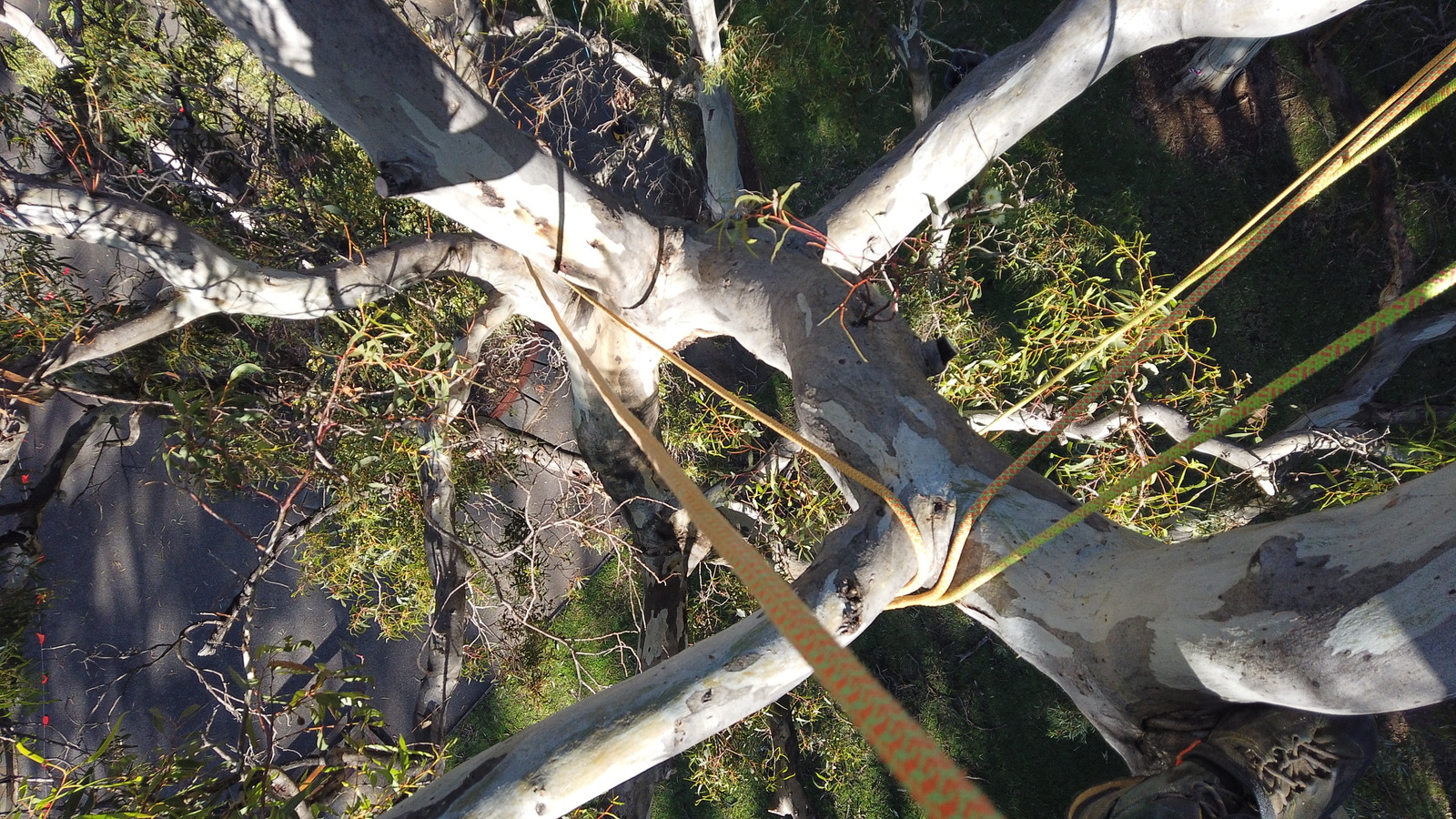
Create an Account
Create an account for powerful AI tools, award-winning courses, and access to our vibrant community.
Already have an account?
Can you follow this equation?
Such a term that probably you would not hear coming from a tree climber. It sounds more like a business person developing a new plan or idea to sell. Not entirely, though.
During our climbing careers, some things pass unseen if they are not behind for improvement. Rope management is one of them. It took me approximately nine years to properly understand what this technique means in practical terms. We always think that timeframe is a burden, pushing down our shoulders with no instance to spare.
Some of us associate being stagnated and organised up in the crown as a time waste, leading to unproductivity. Or something else that intricates our mind, which could make us doubt our skills.
I am afraid to say, but this concept is a fallacy!
These are thoughts that only you can sacrifice or take shortcuts to get the job done, which is merely what your client expects so.
If, for once, you could stop and think where you swing to or how you position yourself for the next cut, maybe then you would realise how important it is to use the rope management skills to make these movements effortless.
For that to happen, manipulating your rope tail in the direction you want it to go might be the right solution.
Or, even after you set up your tie-in point whilst planning your climbing route from the top of the tree, you could easily coil the rope into short bundles. Then, you throw it over the limb of choice, making your rope tail easy to follow, regarding if on SRT (Single Rope Technique) or MRT (Moving Rope Technique). It can be a suitable technique to avoid the rope snagging between your legs or catching by the chainsaw while climbing.
This way, you may allow your movement to be free and smooth until the branch tip.

Then, a simple “ponytail” technique might help you progress to the next section in the tree on the way back. Or if you are climbing on SRT - providing you have enough slack – you only have to progress up and over the next branch, which you could waste less time and energy during the process anyway.
For those who do not know, the “ponytail” technique, as we call it here in Australia, means redirecting your climbing system up and over a branch in the direction of your tie-in point instead of ascending all the way up. It might help you continue climbing to the next section of the tree without going up and down several times.
If you are confused, the “ponytail” technique DOES also work with SRT but requires a different application.
Everything comes in handy when you dedicate time to plan how you tackle the specific climbing situation thoroughly. Pruning scenarios are more friendly accepted in this case, but removals are no exceptions. That said, removals are simpler than pruning as you do not need much movement to reach your goal.
Experienced climbers are well ahead of this rope management technique, leaving beginners unaware of their untrained eyes not yet seen as an efficient technique.
In terms of how to judge a good climber, rope management comes handy in climbing competitions. A competent climber, especially during the Master’s Challenge, must demonstrate efficiency, safety and accuracy by reaching the work stations.
Directing the rope tail to where you want it to go before jumping through a natural crotch should be at the top of the list if you’re going to impress judges. By the way, they are almost expecting you to do so.
A clean and controlled movement can clash with speed. But, as we usually hear a lot in tree climbing comps, “smooth is fast” is a thing if you put them all together, including rope position at the top, following your rope tail and smooth movement until reaching your goal.
Besides, a clean and controlled movement is not just efficient but also faster than bombing down, rushing to the position, get caught along the way, fight with your rope tail and then walk back quickly, almost enough to lose your balance – a bit grim I would say.
Using your rope wisely and be patient when recoiling might help you to throw it properly over the next branch and redirect to a new position instead. This way can give you rewards and pleasant climbing attributes during the process.
You might not just enjoy your time in the tree, but also, you may feel a more consistent state of mind. What’s more, it could make you land sharply on the ground, ready to climb the next one without too much breath loss on the way.
These are some advantages that could make your climbing career change from average to excellent, optimising the time spent in the tree.
I believe this way may allow you to pay attention more often in how you climb and how you could get better every time. I guess there is always a new thing to try out. We just have to give it a go.
Share Post